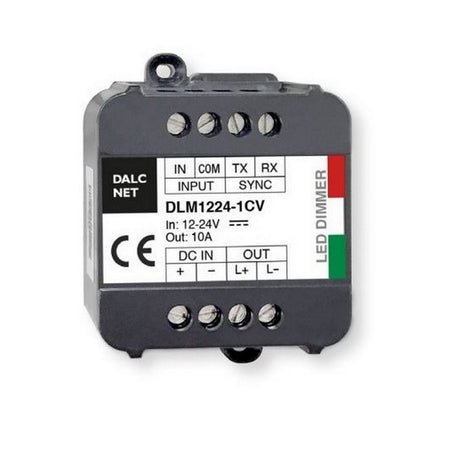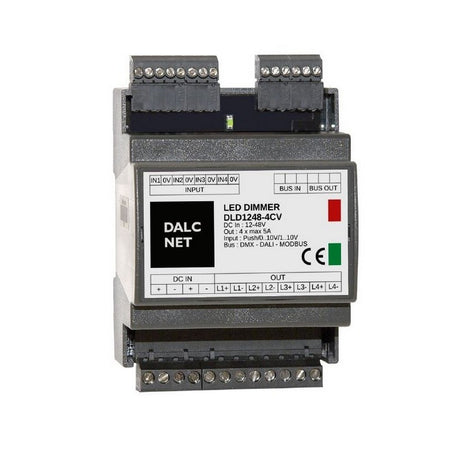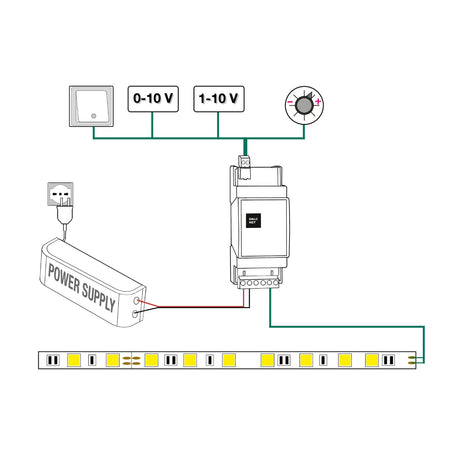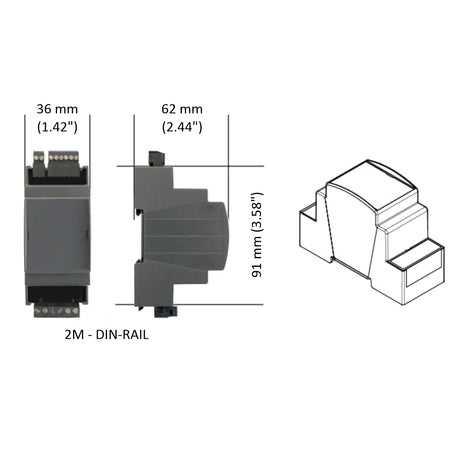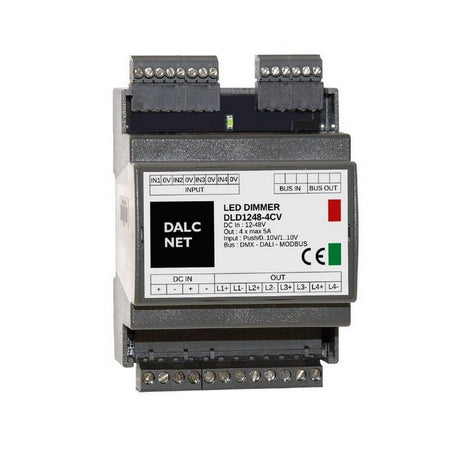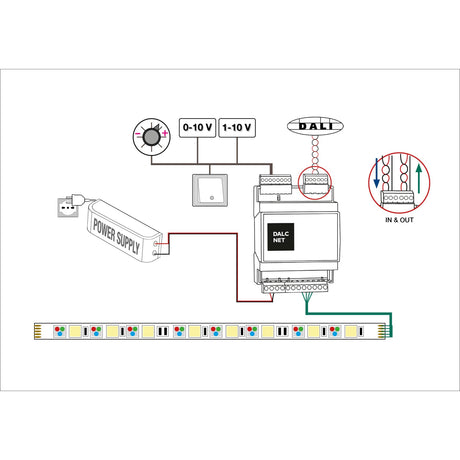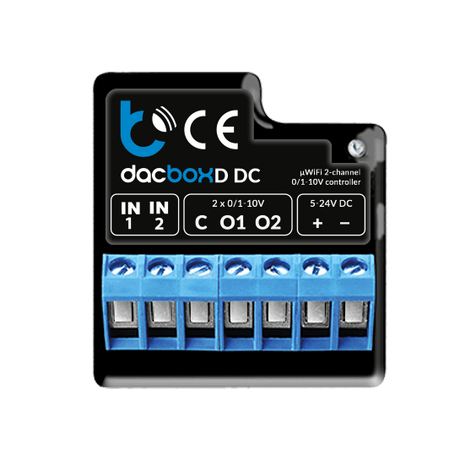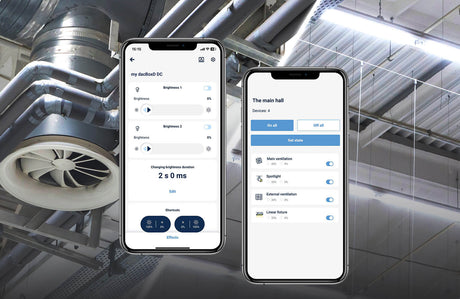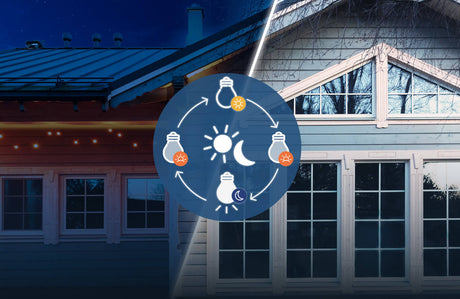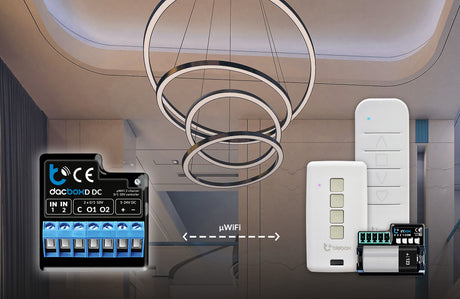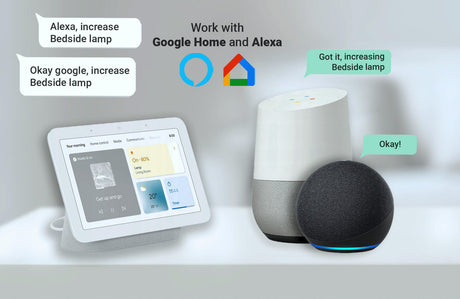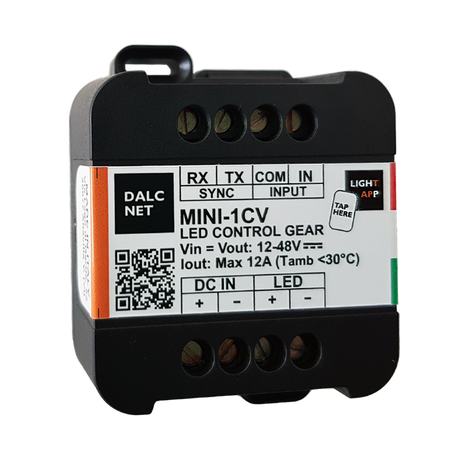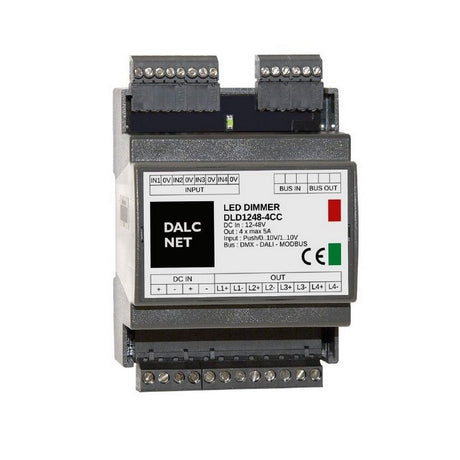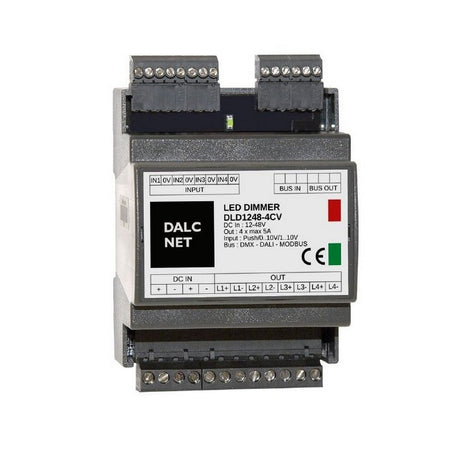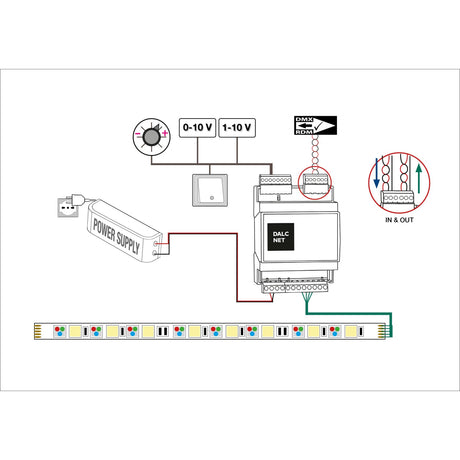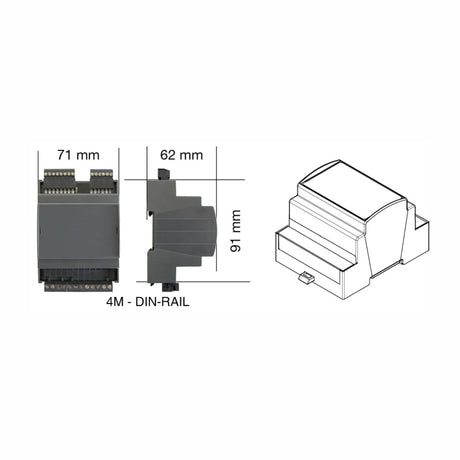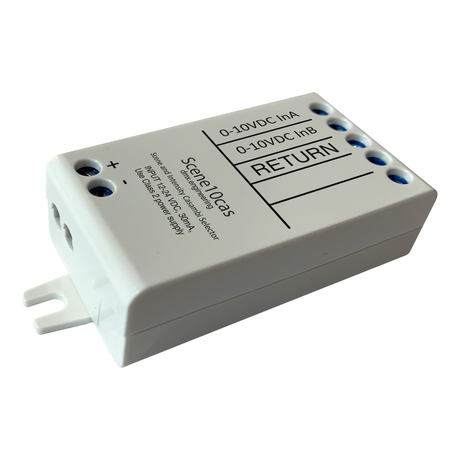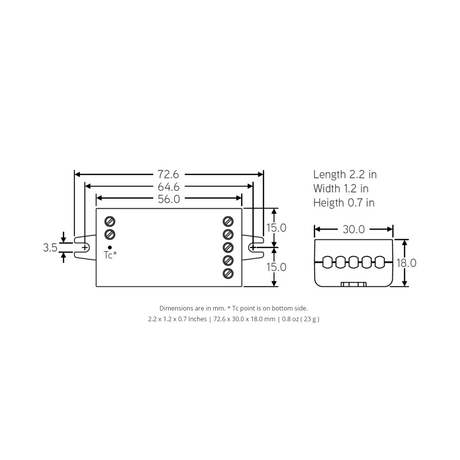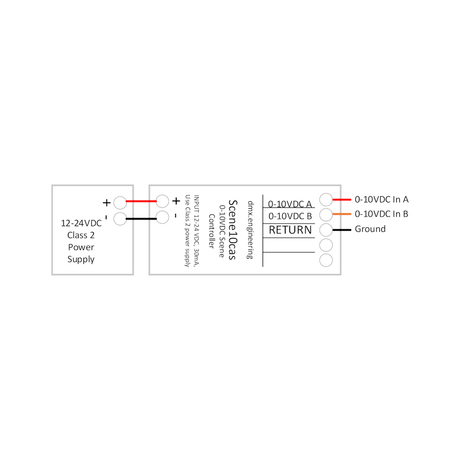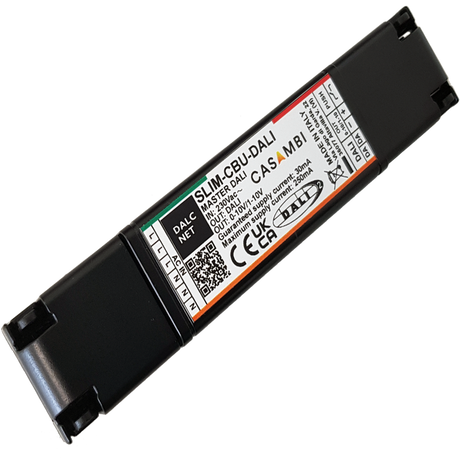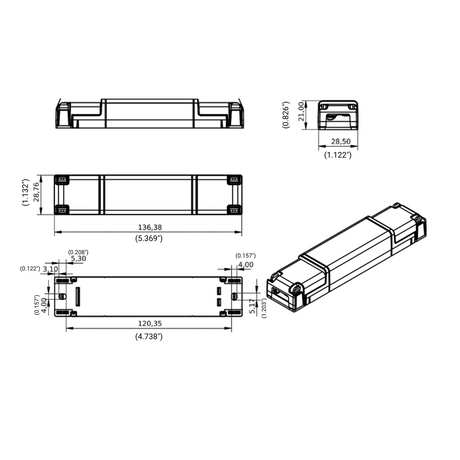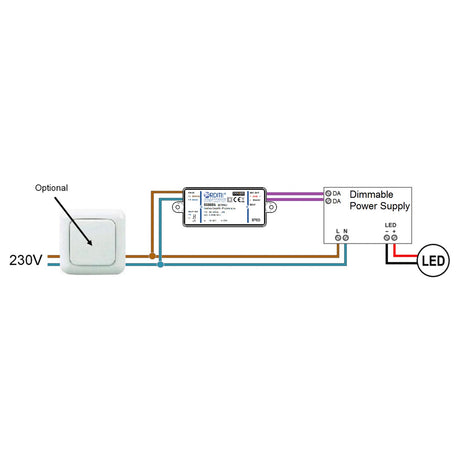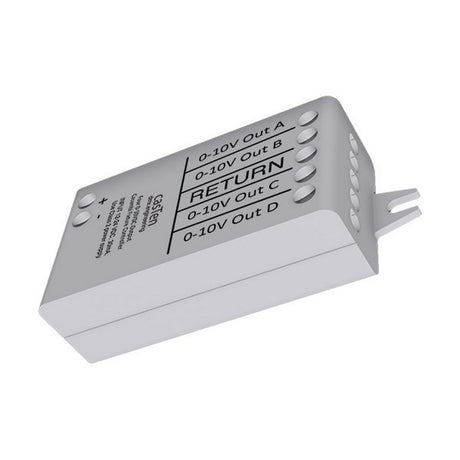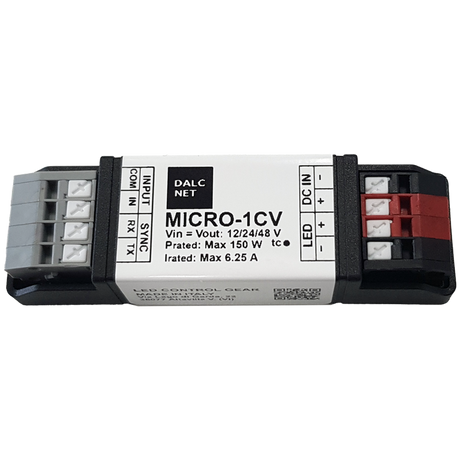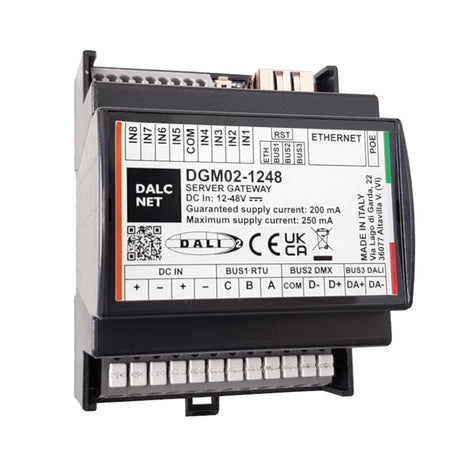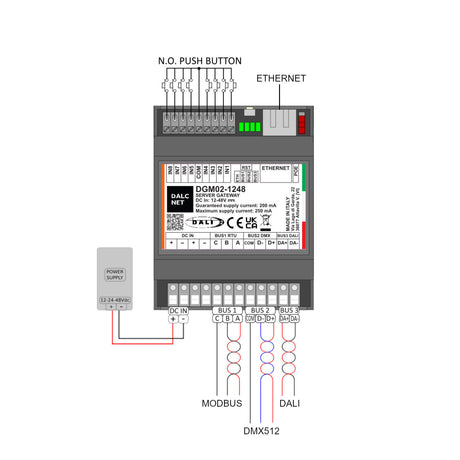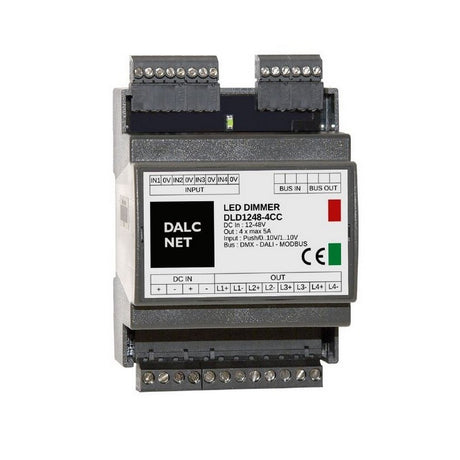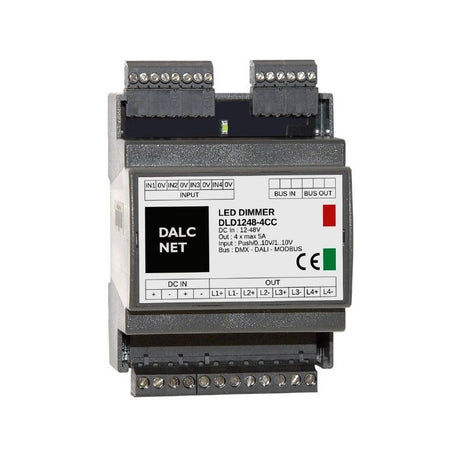What is 0-10V dimming?
0-10V dimming is a lighting control method of adjusting the brightness of a light source by varying the voltage supplied to it. Essentially, it operates on a DC voltage spectrum that ranges from zero to ten volts. This control signal instructs the lighting system to adjust its output proportionally; at 10 volts, the light achieves its full potential brightness, while at 0 volts, it reaches its lowest dimming level. This method offers a highly versatile approach to lighting control, allowing for smooth operation and the ability to dim down to incredibly low light levels, sometimes as low as 0.1%. By seamlessly connecting to LED fixtures, 0-10V dimming provides a flexible solution to create various lighting atmospheres, making it an excellent choice for settings like bars and restaurants where ambience is crucial. We offer a range of 0-10V lighting controllers for sale at the best prices online in the USA.
How does 0-10V dimmer work?
The dimmer plays a pivotal role in this process, regulating the voltage sent to the light fixture. A 0-10V dimmer operates using analog dimming principles through two low-voltage control wires. These wires, commonly colored purple and grey, establish a connection between the dimmer and the LED driver. The direct current (DC) voltage carried by these wires fluctuates between zero and ten volts, effectively modulating the intensity of the LED.
When the voltage reaches ten volts, the light emits at its maximum intensity, equivalent to 100%. Conversely, reducing the voltage to zero results in the dimmest possible illumination level. As the voltage changes, so does the brightness, providing a direct correlation between voltage levels and the intensity of illumination. This method provides a smooth, continuous dimming experience for compatible LED fixtures.
Where to use a 0-10V Dimming control?
0-10V dimming control finds its origins in the regulation of fluorescent fixtures through the use of dimming ballasts, and it remains a prevalent method for this purpose. However, advancements in LED technology have propelled 0-10V dimming into a highly reliable control method for LED fixtures. It is extensively applied in a variety of settings, including retail spaces, office buildings, entertainment venues, and theaters, where the ability to adjust lighting levels is crucial.
Moreover, 0-10V dimming is well-suited for outdoor commercial applications that demand versatile lighting solutions. LED high bays, flood lights, and retrofit kits are among the products that can be effectively controlled using this method. Beyond its atmospheric benefits, 0-10V dimming offers additional advantages in terms of lighting control.
What is a 0-10V controller?
A 0-10V controller is a dimming device designed to control the on/off functionality of lighting fixtures, including both fluorescents and LED lights. These controllers typically come equipped with features for adjusting light intensity. Many 0-10V controllers for LED lights offer the option of utilizing either a built-in line voltage or an external voltage source. This allows users to select the most suitable 0-10V option based on their specific needs and requirements. Additionally, a 0-10V receiver or decoder is a single-output module that enables PWM (Pulse Width Modulation) dimming within the range of 0 to 100%.
What is a 0-10V receiver?
A 0-10V receiver is a single-output module designed to facilitate PWM (Pulse Width Modulation) dimming within a range of 0 to 100%. This device allows for precise control over the intensity of lighting fixtures, making it a crucial component in systems where fine-tuned lighting adjustments are necessary.
Advantages of 0-10V Lighting Controllers
-
Smooth and Flicker-Free Dimming: One of the most significant advantages of 0-10V controllers is their ability to eliminate flickering issues commonly associated with LED lighting. This ensures a consistent and comfortable lighting experience.
-
Compatibility with Various Fixtures: These controllers exhibit impressive adaptability, seamlessly integrating with a wide array of lighting systems. Whether it's LED, fluorescent, or other compatible fixtures, 0-10V controllers offer versatile compatibility.
-
Smooth and Flicker-Free Dimming: One of the most significant advantages of 0-10V controllers is their ability to eliminate flickering issues commonly associated with LED lighting. This ensures a consistent and comfortable lighting experience.
-
Scalability and Integration: Thanks to their integration capabilities with automation systems, 0-10V controllers provide the convenience of centralized control. This allows for the simultaneous management of multiple fixtures, offering a streamlined approach to lighting control.
Applications of 0-10V Lighting Controllers
-
Commercial Spaces: In commercial environments such as offices, conference rooms, and retail spaces, precise lighting control is paramount. 0-10V controllers excel in delivering tailored illumination to enhance productivity and create inviting atmospheres.
-
Residential Environments: In homes, 0-10V controllers find their place in living rooms, bedrooms, and kitchens. They offer the flexibility to create varying moods and adapt to different activities, from relaxing evenings to vibrant gatherings.
-
Industrial and Manufacturing Settings: In industrial settings like warehouses, production floors, and assembly lines, proper lighting is crucial for safety and efficiency. 0-10V controllers provide the control needed to ensure optimal lighting conditions for operations.
What is the difference between a 0-10V dimmer switch and a regular?
A 0-10V dimmer switch differs from a regular dimmer switch in how it controls the lighting intensity:
1. Control Signal Type:
-
0-10V Dimmer: Operates using a low-voltage control signal that ranges from 0 to 10 volts. This signal is sent to the driver or ballast of the light fixture, regulating its brightness.
-
Regular Dimmer: Uses phase-cut (triac) or forward-phase (leading-edge) dimming techniques to adjust the power supplied to the light source.
2. Compatibility:
-
0-10V Dimmer: Compatible with lighting fixtures that have 0-10V dimmable drivers or ballasts. This type of dimmer is commonly used with fluorescent and LED fixtures.
-
Regular Dimmer: Designed for incandescent, halogen, or certain types of dimmable LED/CFL bulbs. It may not be compatible with fixtures requiring a 0-10V control signal.
3. Dimming Range:
-
0-10V Dimmer: Provides a smoother and often wider dimming range compared to regular dimmers. It can typically offer a full range of dimming from 100% brightness down to 10% or lower.
-
Regular Dimmer: The dimming range can vary depending on the type and brand, but it may not be as extensive as that of a 0-10V dimmer.
4. Compatibility with Automation Systems:
-
0-10V Dimmer: Well-suited for integration with building automation systems, smart home platforms, and other control systems due to its standardized voltage control signal.
-
Regular Dimmer: Can be integrated with automation systems but may require additional components or compatibility checks.
5. Complexity of Installation:
-
0-10V Dimmer: May require additional wiring for the low-voltage control signal, potentially making installation more complex than a regular dimmer.
-
Regular Dimmer: Installation is typically straightforward, especially for single-pole applications.
It's important to choose the right dimmer for the specific type of lighting fixtures and systems you have. You can send us a message to get assistance choosing the right 0-10v dimming controller for your project.
Difference between 0-10V and 1-10V dimmer
A 0-10V dimmer operates on a control signal range from 0 to 10 volts, where 0V corresponds to minimum light output and 10V signifies maximum brightness. This type of dimmer is commonly used in commercial and industrial settings.
On the other hand, a 1-10V dimmer works on a range from 1 to 10 volts, excluding 0V. In this system, 1V represents the lowest light level achievable. 1-10V dimming is often utilized in residential applications and is slightly more energy-efficient as it starts from a slightly elevated voltage level.
In practical terms, choosing between them depends on the specific lighting fixtures and control systems in use, as well as the desired level of granularity in dimming control. It's important to ensure compatibility between the dimmer type and the lighting products being employed for optimal performance.
What 0-10V control products do Wired4signs offer?
At Wired4signs USA, we have you covered with our 0-10V dimmer controller:
-
Casambi Controller for Dimmable LED Power Supplies ~ Model CBU-ASD IP65: This controller is designed to facilitate the dimming of LED power supplies. It features an IP65 rating, indicating its suitability for use in environments where it may be exposed to dust or water.
-
Slimline Casambi to DALI Signal Converter ~ Model SLIM-CBU-DALI: This converter serves as a link between Casambi and DALI systems, enabling seamless communication between the two. Its slimline design ensures a compact and efficient installation.
Frequently Asked Questions
Can any 0-10V light fixture be dimmable?
Yes, it is possible for any 0-10V light fixture to be dimmable, provided that it is designed and wired to be compatible with a 0-10V dimming system. Keep in mind that not all fixtures may have this capability, so it's important to check the specifications and compatibility before installation.
Can I use a regular dimmer on 0-10V?
No, you cannot use a regular dimmer designed for phase-cut dimming on a 0-10V lighting system. They operate on different principles. A regular dimmer designed for phase-cut dimming is meant to control incandescent, LED, or compact fluorescent bulbs. A 0-10V dimming system uses a low-voltage control signal (typically between 0 and 10 volts) to adjust the light output of compatible fixtures. This control signal is separate from the main power supply. Using a regular dimmer on a 0-10V system can damage the dimmer, the lighting fixtures, or both, and it may not work as intended. To dim a 0-10V system, you need a specific 0-10V dimmer designed for this purpose.
How many watts can a 0-10V dimmer handle?
A 0-10V dimmer typically handles a power range of 0 to 1000 watts. This means it can control lighting fixtures or devices within that power range by adjusting the voltage from 0 to 10 volts. It's important to note that specific dimmer models may have different wattage ratings, so it's advisable to consult the manufacturer's specifications for precise information.
What kind of wire do I need for a 0-10V dimmer?
For a 0-10V dimmer, you will need a low-voltage control wire. Typically, a 18-22 AWG stranded wire is used for this purpose. Make sure to use a wire that is compatible with the voltage and current requirements of your specific dimming system. You can check our comprehensive range of LED Wiring Accessories, designed to perfectly complement your lighting setup.
Is 0-10V dimming controller low voltage?
Yes, 0-10V dimming controllers operate on a low-voltage system. They typically use a control signal that ranges from 0 to 10 volts to adjust the brightness of compatible lighting fixtures.
What is 0 to 10V control voltage?
A 0 to 10V control voltage, often used in industrial and electronic systems, is a linear analog signal that represents a range of values between zero and ten volts. This voltage range is commonly employed to regulate and control various devices, such as motor drives, lighting systems, and HVAC equipment. The signal's value directly corresponds to the desired level or setting of the controlled parameter, providing a continuous and precise method of adjustment. It is a widely adopted standard due to its simplicity, accuracy, and compatibility with a broad range of control systems.

